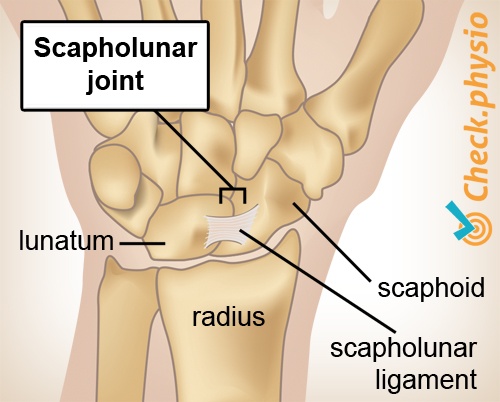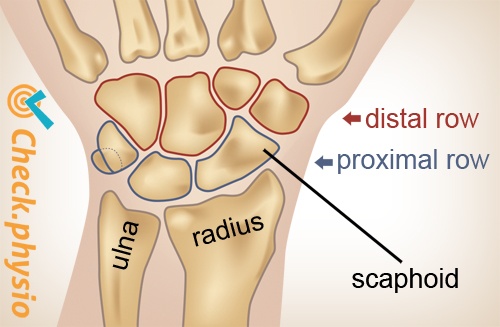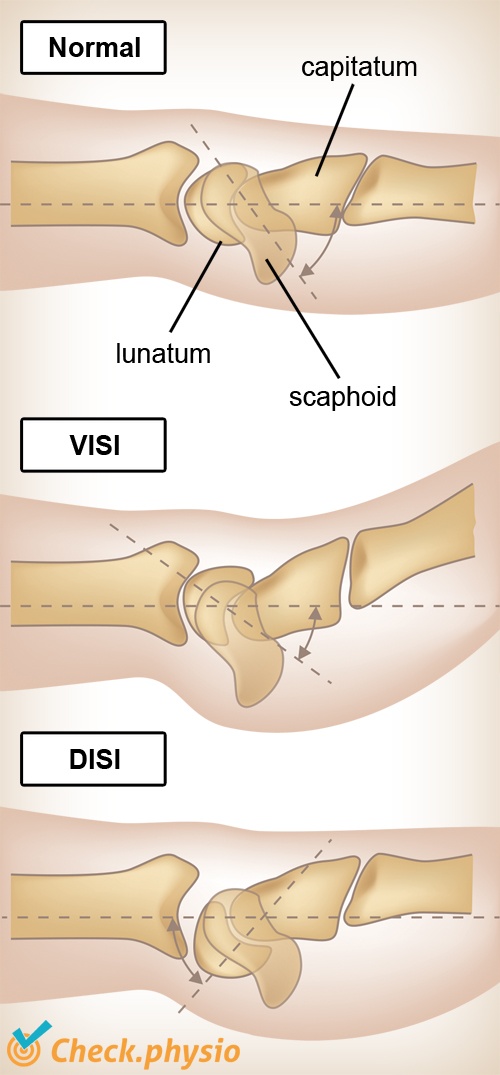- Conditions
- DISI deformity
DISI deformity Dorsal intercalated segment instability
Introduction
A DISI deformity is a condition in which there is a mutual change in position of two carpal bones in the wrist joint. This causes symptoms in the wrist area, particularly when extending the wrist.
In addition to DISI deformity, there is also a VISI deformity (Volar Intercalated Segment Instability). However, this is much less common.

Description of condition
There are eight carpal bones in the wrist joint. They are divided into two imaginary rows that lie next to each other and together they form the transition from the forearm to the hand. The row that lies closer to the forearm is called the "proximal row". The other row, located closer to the hand, is called the "distal row".
The carpal bones of the proximal row play a prominent role in DISI deformity. The lunate bone and the scaphoid bone are not positioned correctly in the wrist. This can cause damage to the ligaments. It results in instability of the scapholunate joint.
Cause and history
Scapholunar instability can have many causes.
- A fall on an outstretched hand.
- (Congenital) joint laxity.
- Overloading through activities or prolonged walking on crutches.
- Frequent joint inflammation (rheumatism).
- A scaphoid fracture
Signs & symptoms
The most important symptoms include:
- Pain when extending the wrist.
- Loss of strength.
- Pressure pain on the scapholunar joint.
In addition, other symptoms may also occur, such as snapping or clicking during wrist movements and problems with gripping objects. In some cases a sudden, severe pain will shoot through the wrist. This may be associated with a crippling sensation.
Diagnosis
The healthcare professional asks about the complaints and how they originated. Then a physical examination follows, where the hand and wrist are examined, and several tests are conducted.
In cases of suspected DISI deformity, additional investigation often follows by means of X-rays, a CT scan or MRI.
Treatment and recovery
Depending on the situation, physiotherapy, splint treatment or surgery may provide relief.
More info
You can check your symptoms using the online physiotherapy check or make an appointment with a physiotherapy practice in your locality.
References
Nugteren, K. van & Winkel, D. (2006) Onderzoek en behandeling van de hand - het pols gewricht Houten: Bohn Stafleu van Loghum.


